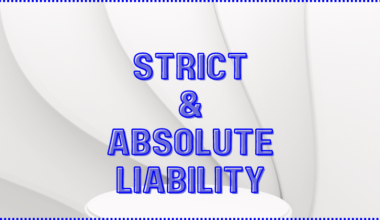When you are new to the Law of Contracts, you assume that a product on display is an offer, and your acceptance to reflected price makes it an acceptance which the seller cannot back out from. Suppose you have a deep desire to buy the dress displayed on the mannequin, which is silently asking you to own. But when you ask the store staff for buying it, they inform you that it was already sold! But didn’t the display convey an offer? Confused? That’s where the law steps in with two simple concepts: “offer & invitation to offer”.
Offer Meaning in Contract
To make a valid contract, it is essential that the first stage of the contract, i.e., the offer, be made in proper form. A proposal and its acceptance is the universally acknowledged process for making an agreement. An agreement arises by an offer or proposal by the one party and acceptance of the same by the other party. The person who makes the offer is generally called the ‘promisor’ or ‘offeror’, and the person to whom it is made is called the ‘offeree’.
Offer is defined in section 2(a) of the Indian Contract Act 1872 as follows: When one person signifies to another his willingness to do or to abstain from doing anything, with a view to obtaining the assent of that other to such act or abstinence, he is said to make a “proposal”.
Essentials of an Offer
- The offer must be made in a clear & defined form; it must be specific.
- The offer should be made with an intention to create a legal relationship and must not rely on social engagement. In case of family or social group promises, the agreement between the parties is not bound.
- The offer must be communicated. (See 2(a) of Contract Act, which explains that a person is said to make a proposal when he signifies it to another person. The term signifies here means to be communicated or to make known. It informs that the offer must be communicated to the other person, i.e., the offeree.
- The offer must not be merely a social engagement. It should not be a mere statement of intention.
- An offer can be general or specific. That, it can be made for a specific person or can be made for the public at large (general).
- The offer should be capable of acceptance; it should be something that can be legally accepted. It should be for something not illegal or against public policy.
- The offer can be converted into a contract immediately. The other person can either accept or reject as soon as it is made.
Invitation to Offer / treat
Invitation to offer is also known as invitation to treat. It is not specifically mentioned in the Indian Contract Act. An invitation is a circulation of offer where a person is informing about the offer with the intention of expecting an offer from another person. In other words, it is an attempt to induce or call an offer; it always comes before an offer. It is an act made with the intention to negotiate more offers.
A few examples of invitations to offer are: Auction, prospective window displays, quotation, catalogue.
In the display of goods, it is always an invitation to an offer made on the part of the shopkeeper; that is, the customer who made an offer, and the shopkeeper has a right to either accept it or reject it.
What is the true test of an Invitation to Offer?
- If the intention is that it can be accepted immediately, then it is an offer.
- If it cannot be accepted immediately, then it is an invitation to offer.
- If the intention is to invite an offer from the other person, then this is an invitation to offer.
- When in a negotiation before an offer – if the intention is to negotiate the offer, this is an invitation to offer.
For example – A mere statement of the lowest price at which the vendor is willing to sell contains no implied contract to sell at that price to the person making the inquiry.
Key Differences between Offer & Invitation to Offer
Definitions
An offer is a clear & definite proposal made with the intention to create a legal relationship or form a contract. An invitation to offer starts with passing the information regarding the offer; it always comes before an offer, and it invites the other person to negotiate or make an offer.
Legal Consequences
An offer immediately becomes a legally binding contract once it is accepted by the other party. An invitation to offer has no legal binding. It can’t legally bind the other person until and unless the other party has accepted that invitation and made an offer.
Who makes an offer?
In the case of an offer, the person making the proposal is an offeror. On the other hand, in an invitation to offer, an offer is made by the other party (customer or bidder).
Role of Intention
In an offer, there is a clear intention by parties to create a legally binding contract, without any negotiation. In an invitation to offer, there is no immediate intention to be legally bound by forming a contract. It is just a step or model before making an offer, i.e., to negotiate the price of an offer.
Examples
An example of an offer can be a proposal to sell a car, a house, or a bid on an auction. Examples of an invitation of offer include the display of goods in a shop, questions, and tenders.
Case Laws on Offer and Invitation to Offer
Harris vs Nickerson (1873)
In this case, the auction was cancelled by the defendant. The plaintiff sued him for cancelling the auction by saying that it is an offer of auction by the defendant, but the defendant, by cancelling, has made a breach of contract and sought damages. The court clarified that it was an invitation of offer; thus, no acceptance to offer took place. No contract was made between the parties; and thus, the defendant was not entitled to any compensation.
Pharmaceutical Society of Great Britain v. Boots Cash Chemists Ltd (1952)
The defendant (Boots) ran the business of retail sale of drugs. Medicines were displayed on the shelves, and their retail prices were also indicated. In his shop, the defendant introduced a new self-service system where a customer directly picks up the medicine from the shelves, puts it in a basket, and takes it to the billing counter and pays before buying it. The petitioner sues the defendant by saying that the self-service system is illegal as per the Pharmacy and Poisons Act, 1933, where a trained pharmacist is needed to supervise the sale of medicines at the exact point when the sale happens. Once the medicine is picked from the shelves, the acceptance takes place.
It was held that the display of the articles, even on the self-service basis, was not an offer but was merely an invitation to treat. The offer was made only after the acceptance takes place by the shopkeeper, and the shopkeeper has a right to accept or reject the offer made by the customer.
Conclusion
From the above cases, it is clear that an invitation to offer is not an offer itself, but merely an invitation for others to make an offer. It is a willingness of a person to negotiate or deal, but it does not show an intention to be legally bound. Therefore, no legal relationship arises until the actual offer is made and accepted.
The difference between offer and invitation to offer has been delineated by our intern, Ms Himani Gill. She has been assisting the team in bringing informational legal blogs.








